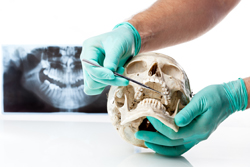Linking learning to career choices and working life
The 'School science teaching by project orientation - improving the transition to university and labor market for boys and girls' (POPBL) project set out to introduce new ways of fostering pupils’ interest in science by school science teaching. Activities sought to link the demands of industry and economy for science and technologies by highlighting the connection between academic inquiry and working. The science teaching method developed by POPBL can be transferred from university to school science teaching through workshops, where science teachers are shown how to adapt and implement POPBL to their particular teaching situation. Regular lessons (in biology, chemistry, computer science, ecology physics, and science and technology) were for a while substituted by POPBL lessons at all types of secondary schools, with pupils ranging in age from 11 to 19. Participating universities had an applied sciences focus and traditionally intensive contacts to industry. Revealing both different and similar results, the latter being independent of culture and school systems, the relevant measures of the results of pilot studies carried out across six countries showed that POPBL has the potential to develop pupils’ interest for science subjects. Furthermore, the motivation of teachers of science subjects was also seen to increase as a result of certain POPBL teaching elements. One of these elements is exposure to continuously changing and 'updated' topics within a set curriculum. The POPBL method works to foster factual knowledge in science, science know-how, knowledge transfer and application, and additional skills and capabilities. Study results showed overall good learning results, increased factual knowledge and higher know-how acquisition in comparison to the control group. In terms of gender differences, it could not be determined whether girls or boys profited more; however, results did indicate that girls were inclined to benefit more from POPBL teaching than from traditional teaching. Although boys displayed more ease undertaking 'dangerous experiments', girls were observed to work more structurally and in a more results-oriented manner with greater ease in reading, understanding and carrying out instructions. The pilot studies did point to lower self-confidence concerning science education and an underestimation of science knowledge on the part of girls. In general, results of the POPBL project showed the approach and methods to be an efficient tool for stimulating science teaching and learning, as well as for increasing motivation for learning and knowledge acquisition.



